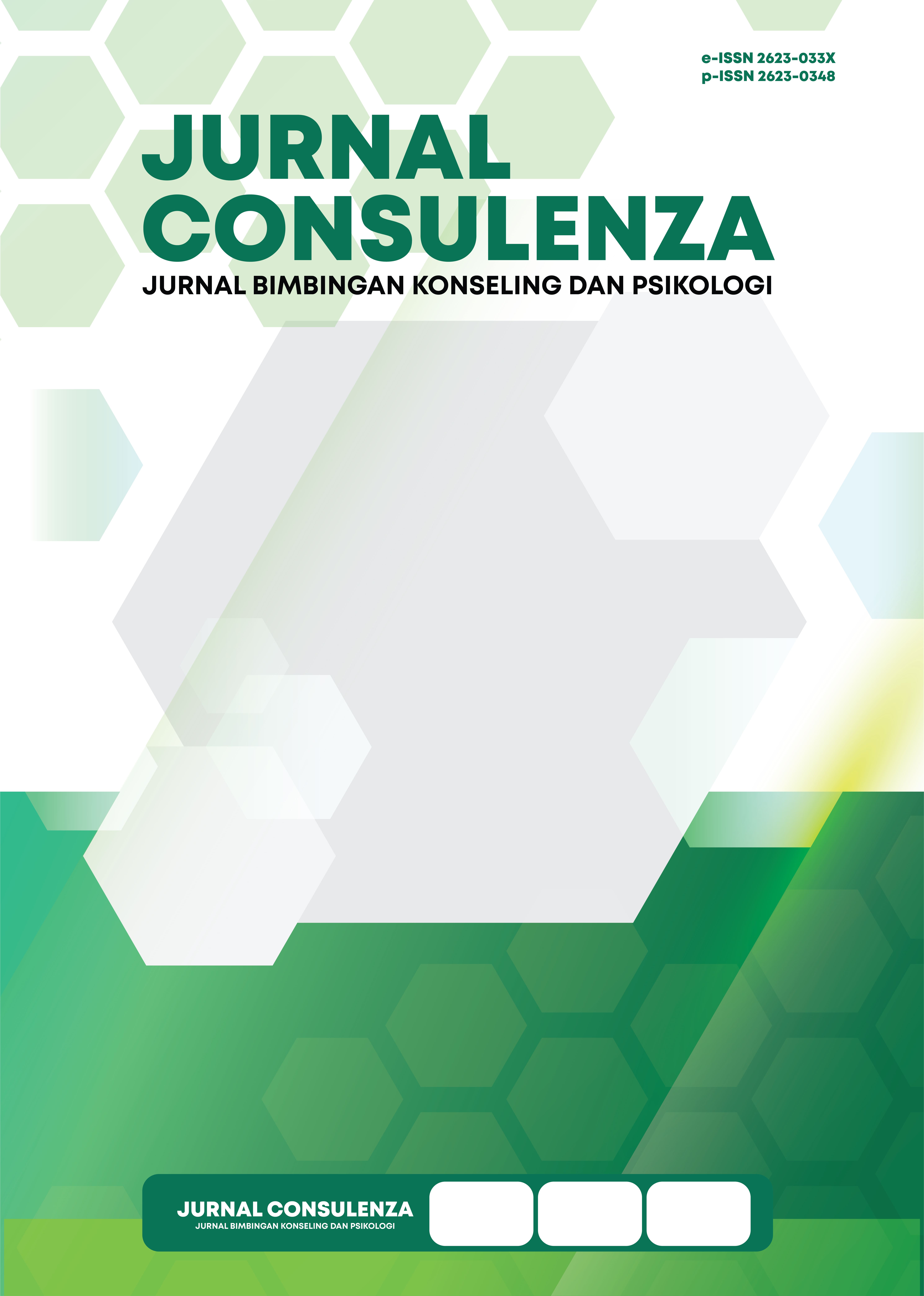Efektivitas Art Therapy untuk Menurunkan Gejala Depresi Pada Narapidana dengan Riwayat Percobaan Bunuh Diri
DOI:
https://doi.org/10.56013/jcbkp.v8i2.3943Keywords:
Art therapy, Prisoners, Symptom of depression, Suicide attemptAbstract
This study aims to determine the effectiveness of art therapy in reducing depressive symptoms in inmates with a history of suicide attempts at Kerobokan Class IIA Prison. This study used a quasi-experimental method where one group was measured before and after receiving the intervention. The study participants were four inmates who still showed symptoms of depression and had a history of suicide attempts. Data collection was carried out before and after the intervention using the Beck Depression Inventory-II (BDI-II) and Person Picking an Apple from a Tree measuring instruments, which were then scored using the Formal Elements of Art Therapy Scale (FEAST). The intervention provided was 10 sessions of art therapy intervention with a cognitive-behavioral approach. Based on the results of the analysis of BDI-II score data using paired sample t-test, the results obtained (t(3)=10.139, p=0.002 (p<0.05) which means there is a significant difference between the level of depression of the research subjects before and after the intervention. Based on the FEAST score data, the results obtained t(3)=-1.639, p=0.2 (p>0.05) which means there is no significant difference between the level of depression of the research subjects before and after the intervention. The results of the study also show that Art Therapy has a large effect in reducing the symptoms of depression in prisoners (effect size=5.070). It can be concluded that Art Therapy is considered an effective intervention in reducing the symptoms of depression in prisoners.
References
American Art Therapy Association. (2013). Art therapy. American Art Therapy Association.
Babouchkina, A., & Robbins, S. J. (2015). Reducing negative mood through mandala creation: A randomized controlled trial. Art Therapy, 32(1), 34–39. https://doi.org/10.1080/07421656.2015.994428
Beck, A. T. (2006). Depression: Causes and treatment. In University of Pennsylvania Press. University of Pennsylvania Press. https://doi.org/10.1080/00029157.1974.10403697
Berg, R., Landreth, G., & Fall, K. (2006). Group counseling: Concepts and procedures (4th ed.) (4th ed.). Taylor & Fracis Group, LCC.
Bucciarelli, A. (2011). A normative study of the person picking an apple from a tree (ppat) assessment. Journal of the American Art Therapy Association, 28(1), 31–36. https://doi.org/10.1080/07421656.2011.557349
Erickson, B. J. (2008). Art therapy treatment with incarcerated women. In ProQuest Dissertations and Theses (Issue 2008). University of Central Florida.
Favril, L., & O’Connor, R. C. (2019). Distinguishing prisoners who think about suicide from those who attempt suicide. Psychological Medicine, 51(2), 228–235. https://doi.org/10.1017/S0033291719003118
Findley, E. B. (2013). Focusing Oriented Art Therapy Interventions to Reduce Suicidality in Caucasian Middle-Aged Men A Program Design. Phillips Graduate Institute.
Finnegan, J. M. (2009). The effect of art therapy on depression. In Arts in Adlerian Counseling and Psychotherapy and Art Therapy (Issue October). Arts in Adlerian Counseling and Psychotherapy and Art Therapy.
Gantt, L., & Tabone, C. (1998). The formal elements art therapy scale: The rating manual. Gargoyle Press.
Graham, P. (2005). Cognitive behaviour therapy for children and families 2nd ed. Cambridge University Press.
Gussak, D. (2006). Effects of art therapy with prison inmates: A follow-up study. The Arts in Psychotherapy, 33(3), 188–198. https://doi.org/10.1016/j.aip.2005.11.003
Gussak, D. (2007). The effectiveness of art therapy in reducing depression in prison populations. International Journal of Offender Therapy and Comparative Criminology, 51(4), 444–460. https://doi.org/10.1177/0306624X06294137
Gussak, D. (2009). The effects of art therapy on male and female inmates: Advancing the research base. The Arts in Psychotherapy, 36(1), 5–12. https://doi.org/10.1016/j.aip.2008.10.002
Kim, S.-H., & Woo, S.-J. (2014). The effect of clinical art therapy programs for adolescent suicide prevention. J Korean Soc Sch Health, 27(2), 100–108.
Kring, A. M., Johnson, S. L., Davison, G. D., & Neale, J. M. (2010). Abnormal Psychology Eleventh Edition. In John Wiley & Sons, Inc. John Wiley & Sons, Inc.
Kurnia, A., & Ediati, A. (2018). Pengaruh Coloring Mandala Terhadap Negative (Vol. 7, Issue April). Universitas Diponegoro.
Liebman, M. (2005). Art therapy for groups: A handbook of themes and exercises, 2nd ed. In Taylor & Francis e-Library (2nd ed.). Taylor & Francis e-Library. https://doi.org/10.7748/mhp.8.1.27.s27
Malchiodi, C. A. (2012). Handbook of art therapy, 2nd ed. In C. A. Malchiodi (Ed.), Handbook of art therapy, 2nd ed. The Guilford Press.
Neuman, W. L. (2014). Social Research Methods: Qualitative and Quantitative Approaches (7th editio). Pearson Education. https://books.google.co.id/books?id=Ybn3ngEACAAJ
Nurdiyanto, F. (2020). Masih ada harapan : Eksplorasi pengalaman pemuda yang menangguhkan bunuh diri. Persona: Jurnal Psikologi Indonesia, 9(2), 369–384. https://doi.org/doi.org/10.30996/persona.v9i2.3995
Nurrahma, E. (2015). Perbedaan self-esteem pada narapidana baru dan residivis di lembaga pemasyarakatan kelas i malang. Jurnal Psikologi UNIBRAW, 1–12.
O’Connor, R. C., & Sheehy, N. P. (2001). State of the art: Suicidal behaviour. The Psychologist, 14(1), 20–24.
Rappaport, L. (2008). Focus-Oriented Art Therapy - Accessing the Body’s Wisdom and Creative Intelligence. Jessica Kingsley.
Sadock, J., & Sadock, V. A. (2000). Kaplan & Sadock’s comprehensive textbook of psychiatry 9thed. Lippincott Williams & Wilkins.
Saputra, A., Kartasasmita, S., & Subroto, U. (2018). Penerapan art therapy untuk mengurangi gejala depresi pada narapidana. Jurnal Muara Ilmu Sosial, Humaniora, Dan Seni, 2(1), 181. https://doi.org/10.24912/jmishumsen.v2i1.1599
Vick, R. M. (2007). The boy is the father to the man: Introduction to the special issue on men in art therapy. Art Therapy, 24(1), 2–13. https://doi.org/10.1080/07421656.2007.10129363
Whitaker, D. S. (2003). Using Groups to Help People. In Using Groups to Help People (2nd ed.). Brunner-Routledge. https://doi.org/10.4324/9780203360835
Widayanti, L., Hasanah, M., Hadi, A., Sundafa, A., Jember, U. I., & Info, A. (2025). Teknik cognitive behavior therapy untuk mengetahui kecemasan pada siswa. Consulenza : Jurnal Bimbingan Konseling Dan Psikologi, 8(1), 91–99.















